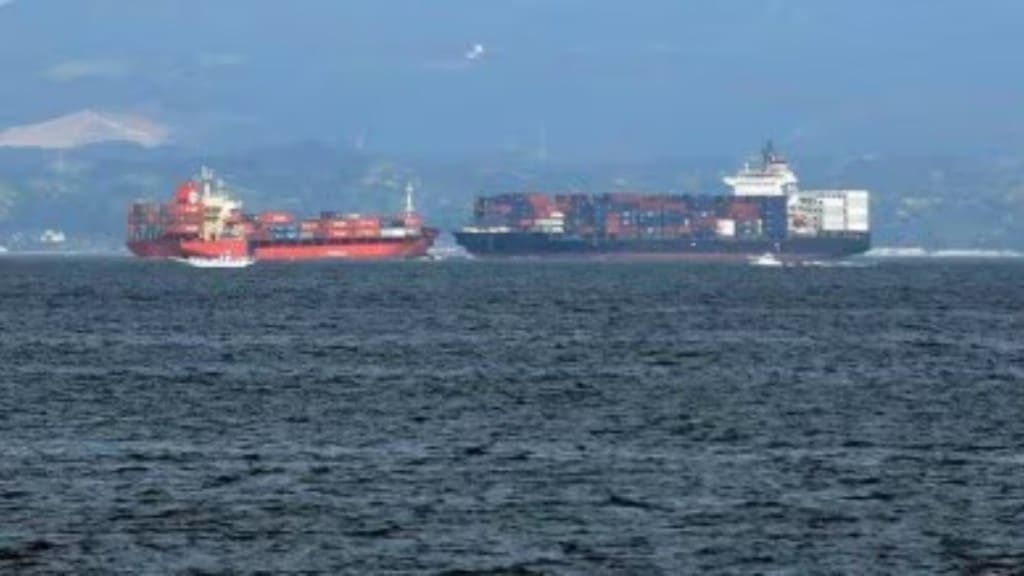Domestic shipping companies are expected to continue to see a declining trend in revenue growth with an on-year dip of 8-10 per cent in fiscal 2026, stated a report by CRISIL Ratings. This, it added, will be on account of softening of charter rates — for crude oil and petroleum products amid stagnant demand, and moderation in those for dry bulk carriers following fleet additions.
Revenue and margins which came down last fiscal, per the report by CRISIL, continue to slide in the current fiscal after a growth of 35 per cent in fiscal 2023, when charter rates had surged as a result of disruption in global sea borne trade caused by the Russia-Ukraine confrontation and pent-up demand after the pandemic. However, it added that a sharper decline in revenue is unlikely since the overall tonne-mileage remains healthy owing to long-haul travel routes adopted by ships amid the ongoing geopolitical conflicts.
Further, lower revenue will mean that operating margin will also fall to 32-34 per cent next fiscal from over 40 per cent last fiscal. It will still be higher than the cyclical average of 25-30 per cent for the industry and vary by companies, depending on fleet and contract mix.
The credit profiles of shipping companies would however remain stable given modest capital expenditure (capex) plans, CRISIL said.
CRISIL studies five shipping companies, which account for about half of the 20 million metric tonne deadweight tonnage (DWT) of shipping fleet in India, to report the findings.
Fleets of domestic shipping companies are dominated by tankers that carry crude oil and clean petroleum products (around 70 per cent to total DWT), followed by dry bulk carriers hauling unpackaged commodities such as coal, iron ore and grains (~20 per cent). The balance is distributed among container ships, gas carriers and others.
Charter rates correlate with global demand-supply dynamics. While those for crude and petroleum product tankers began on a firm footing this fiscal, they moderated in the second quarter due to lower consumption, leading to an average 6 per cent decline on-year in the first half. With this trend in rates expected to continue, the second half could see a steeper on-year decline, on a high base of previous fiscal caused by the Red Sea crisis.
Ankit Kedia, Director, CRISIL Ratings, said, “The current trend of softening in charter rates for crude and product tankers is likely to extend in next fiscal as global crude oil consumption is expected to grow a mere 1 per cent. This could lead to an overall 8-10 per cent on-year fall in revenue for shipping companies next fiscal. The continued rerouting of ships to avoid the Red Sea route would, however, result in higher tonne-miles. This, coupled with low addition to the shipping fleet, will prevent any steep decline in charter rates over the next 12-15 months.”
With the growth in demand for key commodities, especially iron ore and coal (accounting for 40-45 per cent of the global dry-bulk trade) and higher tonne-mile outpacing fleet growth, CRISIL said, average charter rate for dry bulk carriers had almost doubled during the first half of this fiscal. This will likely continue before charter rates soften next fiscal as additions to the fleet are expected to be strong on the back of scheduled deliveries and healthy orderbook position of ~10 per cent at yards.
This dip in charter rates would moderate the operating profitability of shipping companies.
Joanne Gonsalves, Associate Director, CRISIL Ratings, said, “The operating margin of shipping companies is likely to see 400-500 basis points contraction to 35-37 per cent this fiscal and further to 32-34 per cent next fiscal as charter rates normalise. Nonetheless, margins would continue to be remunerative and ensure a comfortable low-to-mid-teen return on capital. We expect the credit profiles to remain stable, on the back of healthy cash flows and limited debt addition as no major capex in the form of fleet addition is planned.”
Debt to Ebitda ratio, a key credit profile indicator, for shipping companies is expected to moderate to 2.0-2.2 times next fiscal compared with 1.4 times last fiscal. That said, CRISIL maintained, healthy liquidity and monetisable nature of assets will absorb the impact of cyclicality and keep credit profiles healthy. “Easing of the ongoing geopolitical conflicts or any further escalations that may alter the charter rates will bear watching,” it concluded.

